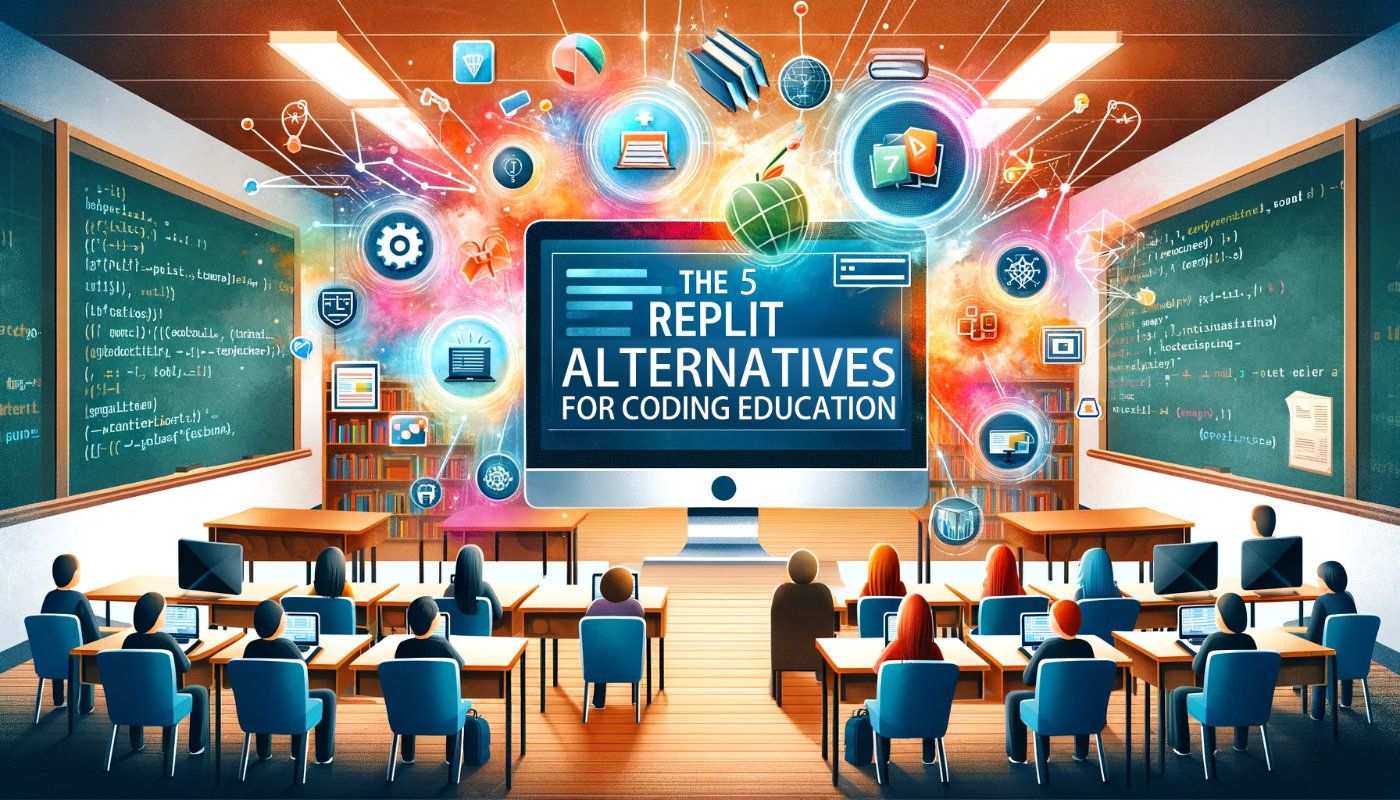The sudden deprecation of Replit's widely-used Teams for Education sent shockwaves through the computer science teaching community. As educators scramble to find new platforms, quality alternatives have become crucial for stabilizing disrupted coding curriculums.
This listicle evaluates the top options capable of enabling robust coding education in the post-Replit era. The ranked solutions here provide exceptional collaborative workspaces while avoiding the instability threats looming over many free services.
1. Codeanywhere
Claiming the crown for Replit alternatives is Codeanywhere, offering an elite coding environment tailored for computer science education across all devices. The fully online IDE removes setup roadblocks so students can gain coding literacy easily through browsers. Shared workspaces facilitate immersive team projects with peer programming, enabling differentiated instruction.
Integrated pro developer tools like Git/GitHub and terminals connect coding to real-world practices. Codeanywhere’s latest version features Dev Container Specification support, allowing complete workspace customization for tailored educational experiences. Reliable infrastructure and dedicated edu support further empower scaled growth.
For a frictionless Replit replacement combining versatility, features, and stability, Codeanywhere has no equal. The platform’s student-centric priorities make it a leading choice as institutions standardize curriculums for the future.
2. GitHub Codespaces
Now natively integrated with GitHub Classroom, Microsoft’s GitHub Codespaces provides online dev environments running on GitHub repositories. This simplifies environment configuration while allowing access to cloud-based containers from the browser. By eliminating local machine management, teachers enable more focus on student coding versus technical troubleshooting.
Built-in GitHub Education elements like scorecards and autograding accelerate student feedback too. Centralized management and VCS foundations through GitHub impart confidence in toolchain longevity - a concern raised by Replit’s pivot. However, until Codespaces completes optimizations for browser-based access, hardware flexibility lags rivals. But for institutions already invested in GitHub's classroom toolset, Codespaces warrants strong consideration.
3. AWS Cloud9
The cloud IDE option from Amazon Web Services (AWS) provides solid collaborative editing capabilities and terminal access. AWS educator tooling like Classroom Control assists teachers in managing cloud-hosted environments centrally. Integration with AWS services facilitates building serverless applications while promoting scalable best practices. Real-time pair programming use cases make Cloud9 a versatile environment fit for many curriculums.
However, the prescriptive nature of managed cloud environments could hinder quick iteration compared to alternatives. And the reliance on AWS's free educator credit places limits on student experimentation scope unless institutes budget access. But for coding programs requiring structured workflows, Cloud9 remains a turnkey solution.
4. Coder
Coder offers strong remote access capability for cloud-based developer environments through its browser-accessible VSCode IDE. For institutions lacking consistent local device availability, the remote IDE could assist some classroom scenarios depending on tech constraints.
However, Coder's remote connectivity focus also contributes to a comparatively clunky collaboration experience next to rivals. Limited educational support and dependencies on private infrastructure Control Planes further hinder scaling multi-student usage. While beneficial for some niche access needs, Coder falls short as holistic Replit replacement.
4. Daytona
As a promising upstart, Daytona provides development environments management platform which serves workspaces accessible via browser without installations or through existing local IDEs, showing solid potential for future educational applications. The platform's early access availability showcases impressive flexibility and accessibility.
Daytona's GitHub repository also includes an free installer for launching personal workspaces, enabling educators to start exploring functionality using their own content. As the product roadmap progresses, Daytona looks well-positioned to grow into a full-fledged coding education asset. But for now, feature gaps like lack of collaboration and workspace management bump Daytona to the 'watch closely' category.
The Quest Continues
With Replit's Teams for Education shutdown displacing thousands, these seven alternatives hold strong potential to anchor computer science programs moving forward. As institutes evaluate options on the criteria vital for learning outcomes, Codeanywhere seizes the lead overall for its dedication to providing an exceptional coding education platform.
Still, teachers willing to exchange aspects of user experience for specialized strengths in certain workflows may find the other modern platforms ready to fit curriculum pieces too. The path beyond Replit promises short-term turbulence but also fresh opportunities. By choosing new solutions strategically, educators can uphold stable coding education and continue inspiring future generations of engineers and innovators.




